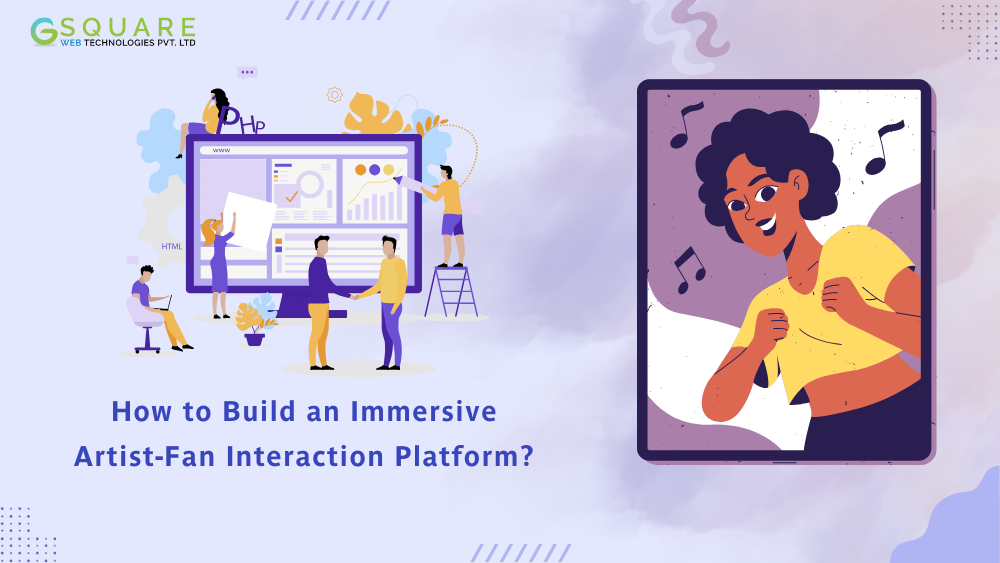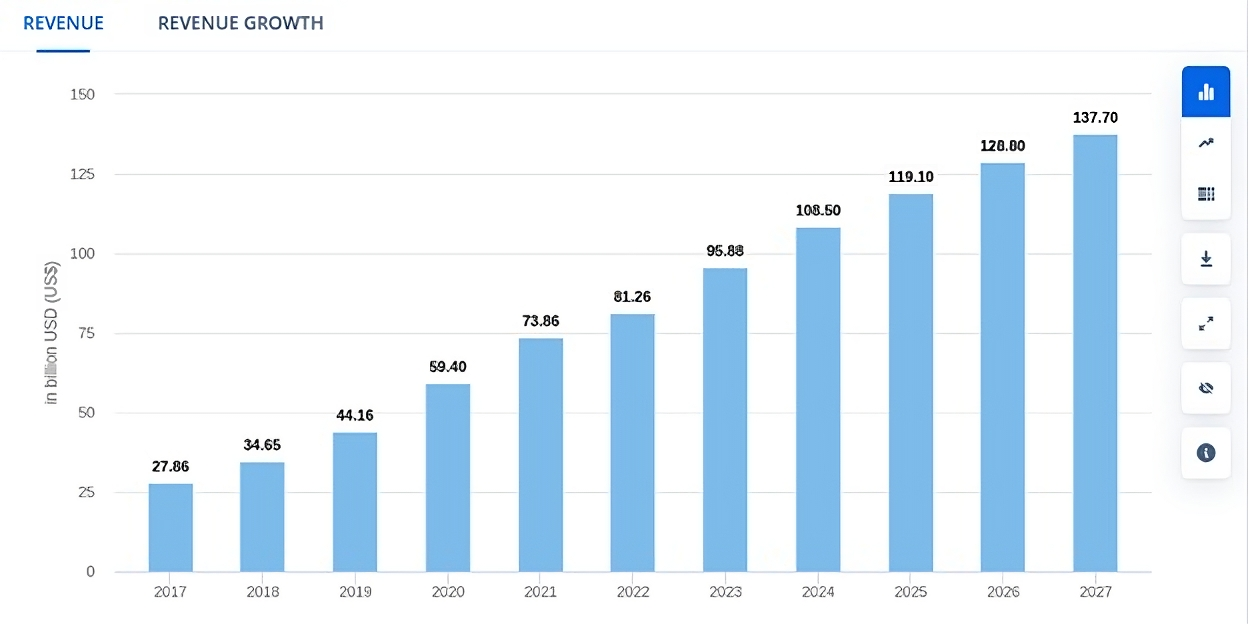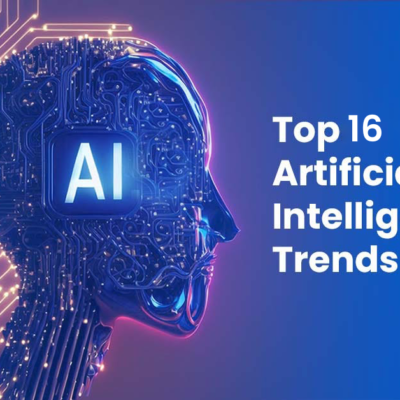
How to Build an Immersive Artist-Fan Interaction Platform?
Historically, you may have seen several changes in the Entertainment Industry. These changes not only impacted the size of the audience but also the way of content delivery. From real-life stage shows to the holograph, we have come so far. Artificial Intelligence is also changing the entertainment domain and taking it to an entirely new level. The transformation and development are still going on bringing several new trends in this domain.
The new way of delivering content that is going to be immersive for entertainment industry lovers is via digital means that can allow artists to organize one-on-one sessions with their fans in an entirely personalized space. For that reason, an Artist-Fan personalized interaction platform will be in demand. In this article, we will discuss the reasons why this type of platform is a must-have for new-age artists and how they can earn their bread and butter from it while delivering unique immersive experiences to their fans. So, without wasting any time let’s get started.
Demand & Data
The demand for immersive content is higher and increasing rapidly, for instance, according to a report from Statista, the revenue in the Video Streaming market is projected to reach US$95.88 billion in 2023 and US$137.70 billion by 2027. Artists can take advantage of this new trend by developing a dedicated interaction platform that can allow them to stream 24×7, with their content or live sessions for their fans.

Why is a Dedicated Artists-Fan Interaction Platform a Must-Have?
In the current era of digitalization, Artists have to keep pace with the new technology and related trends. These new developments are highly needed for:
1. Enhanced Fan Engagement
Having a dedicated platform allows artists to offer their fans an immersive experience. Unlike Instagram and Facebook, this platform can customized to their unique style and brand. This fosters a stronger connection between artist and their fans by allowing them to make deeper engagements frequently and in an entirely new and safe online space where everything is controllable and accordion to their unique needs.
2. Creative Freedom
One of the major problems with third-party platforms is the strict rules and regulations they laid on creative stuff, for instance, this report talks about something called ‘shadoban’ that reduces the reach of Artists on Instagram. By having their own dedicated platform, Artists can have complete control over the content, design, and features and they will be free to experiment with new ideas and artistic expressions without limitations.
3. Monetization Opportunities
Financial stability is essential for everyone and Artists are not an exception. Building a dedicated platform to interact with fans exclusively enables artists to generate revenue through subscription models, ticket sales for special events, merchandise sales, or premium content access. This all will be in their own hand and control and they will be able to kick-start an additional income stream to be financially stable.
4. Analytics and Insights
The worst thing about third-party platforms is they do not let the Artists have full control over the fans’ data. Through building their own platform, artists can gather valuable data on fan behavior and preferences. This data would be a game-changer for them if utilized properly. Through data-driven decision-making, they can deliver their fan an engaging immersive experience that helps them make bonds with fans for long and even for life.
5. Adaptation to Industry Shifts
However, third-party platforms claim to be open to adaption to industry shifts but actually, it is impossible for them to keep pace with all industries. A dedicated platform can do wonders here. It allows artists to adapt to emerging industry trends and technologies as quickly as possible. This helps them maintain their fan base that can be disturbed due to being inaccessible to new emerging industry shifts. This develops an entirely new artist-fan journey achieved by evolving digital platforms.
Exclusive Features Personalized Platform Can Offer
Artists find themselves locked into an eco-chamber with some common features when they use third-party platforms to demonstrate their art to their fans. Having their own platform lets them develop exclusive features like:
1. Riddle-Based Entrance
Artists can offer features like Riddle-Based Entrance, which offers fans an engaging experience from the outset. They can build artistic and creative puzzles to enter into the show. These tactics help increase engagement and make the exclusive platform more unique and full of fun.
2. Exclusive Music Player
Having a dedicated platform opens the doors to creativity and features. Artists can offer an exclusive music player or other kinds of entertainment-related features. These all stuff ultimately enhance the positive user experience and artists can offer exclusive content on it.
3. Creatively Locked Shop
A dedicated platform can be customized to the purchase needs of fans. They can browse privately and can experience the exclusive features along with guaranteed entertainment. Safe payment options can be implemented and security measures can be taken according to the needs of the platform. This exclusive digital marketplace can be developed into a fan engagement tool with a unique online shopping experience.
4. Personal Space
Last but not least, Artists can have a lot of personal space to emphasize their personal stories to deepen their connection with fans. They can create special sections with underscore Biography, Storytelling, Shared Moments, and more. This stuff and spacing can’t even be imagined to exist on a third-party platform.
Therefore, we can say that having a dedicated platform is like an online studio for the artist. They can arrange and maintain it according to their needs and fans’ convenience.
How to Build – Step-by-Step Guide
Now, we have got to know, how building a dedicated platform can help artists increase their reach. Let’s learn, how to build a platform using technology stacks that can meet all the demands of an artist, step by step:
Step 1: Define Your Goals and Features
- Define Objectives
First of all, Artists have to define their goals and clearly outline the purpose of the platform. They can select whether they want to build it to increase fan engagement, or just for content sharing, or to sell tickets.
- List Features
Once done, Artists need to create a list of features they want to embed in their platform. These features depend on their choice, some common features that can be considered to implement include user profiles, chat functionality, content sharing, event scheduling, and payment processing. Other than these can be taken into account according to the requirements that vary from artist to artist.
Step 2: Choose Your Technology Stack
- Frontend
This technical word might be new to them, Frontend means, the coding that decides how the platform will look to fans. They can select a frontend technology like React, Angular, Vue.js, etc., to build the user interface.
- Backend
Another technical word, means, how things work behind fans’ activities on the platform, such as when they click a button to like or share how the platform will respond. For this purpose, they can choose backend frameworks like Node.js, Ruby on Rails, Django, etc.
- Database
This is like a memory card to remember and store all the information about fans’ activities and artist’s stuff. They can pick a database system, such as MySQL, PostgreSQL, MongoDB, Firebase, etc., for storing user data and content.
- Hosting
To make the platform accessible via the internet, artists must decide where they want to host their platform, whether on a cloud provider like AWS, Google Cloud, or Azure, or on dedicated servers.
Step 3: Other Technical
- Database Schema
It helps define how user profiles, content, messages, and other data will be structured and related.
- User Authentication
To secure fans’ accounts artists have to implement user authentication using libraries like Passport.js or Firebase Authentication.
- API Development
Artists are suggested to build APIs to handle fan registration, content creation, messaging, and other platform functionality.
- Content Management
This is a must-part of the platform, artists have to develop features for themselves to upload and manage content like music, videos, images, and posts. Real-Time Chat is another amazing feature here.
- Marketing Strategy
Lastly, artists must develop a marketing plan to attract fans to their platform through social media, advertising, and partnerships. That’s all, to develop an amazing platform to leverage the benefits of emerging technology in the entertainment domain.
Benefits of Artist-Fan Interaction Platform
1. Wider Fan Base
Dedicated immersive platforms provide fans with a more interactive and engaging experience. It ultimately helps artists to widen their reach and earn more fans. As fans can connect with their favorite artists on a deeper level, a stronger emotional bond builds.
2. Additional Earning Opportunities
These platforms have the potential to allow artists to leverage new ways of monetizing their content. These additional revenue streams for artists can be spent on resources required to improve the quality and quantity of their content. Revenue can be generated through paid subscriptions, merchandise sales, virtual events, and more. This provides artists with an ecosystem to generate income directly from their fan base.
3. Offering Exclusive Content
On their personalized platforms, Artists can offer exclusive content, such as behind-the-scenes footage, unreleased tracks, or personalized messages, to their most loyal fans. It can be done even without making the content public. This exclusive content helps fans remain active on the platform and it also creates a buzz for upcoming events.
4. Real-Time Fan Feedback and Collaboration
The personalized platform also allows artists to gather feedback from their fans in real-time. It also enables them to customize their work to their audience’s preferences. If it is needed or demanded, artists can also collaborate with fans on creative projects. It fosters a sense of community and co-creation.
5. Data Insights
These Immersive platforms can be implemented with features like collecting valuable data on fan behavior and preferences. Once this data is gathered artists can understand their audience and make data-driven decisions and marketing strategies.
6. Brand Building
Although artists can build their brand image on various platforms, personalized platforms can shape it amazingly. They can directly tell their success story and convey their values more effectively and categorically without feeling embarrassed because, in that ecosystem, everyone is their fan and already connected to their flow of thoughts. This not only widens their fan base with time but also helps them with long-term financial sustainability.
7. Long-term Career Sustainability
Once build their own empire, artists can expect a more stable and sustainable career. After having all the facilities at their own platform they become less reliant on external platforms or record labels.
Conclusion
In a nutshell, the demand for immersive technology in the entertainment industry is increasing at the fastest pace possible. This is the best time for artists to leverage the power of technology. Building an immersive Artist-Fan Interaction Platform will be a crucial step as of now, offering a range of benefits for artists in this digital age.
If you are an artist who wants to build your own personalized platform but in the puzzle about where to start, contact experienced developers at Gsquare Web Technologies Pvt Ltd and give your project a kick start.
FAQs
- What is an Artist-Fan Interaction Platform?
An Artist-Fan Interaction Platform is a dedicated digital space. They can utilize it to engage with their fans on a personalized level.
- Why is it important for artists?
It is crucial for artists because it allows them to create deeper connections with their fans. They also can experience creative freedom, monetize their content, and adapt to industry shifts more effectively using these platforms.
- What are some exclusive features of these personalized platforms?
Some exclusive features include riddle-based entrances, custom music players, creatively locked shops, and personal spaces for sharing their stories and experiences.
- How can artists build their own Artist-Fan Interaction Platform?
They can start by choosing the appropriate technology stack for frontend, backend, and database. However, it is recommended to hire developers to do this task efficiently as it requires technical experience.
- What are the benefits artists can leverage by having a dedicated platform?
These platforms can bring benefits like developing a wider fan base, opening ways to additional earning opportunities through subscriptions, increasing merchandise sales, and more.
- Why is it important for artists to own and control their fan data?
Owning and controlling fan data on their platform can allow artists to understand their audience better, make data-driven decisions, and customize their content and marketing strategies accordingly.





